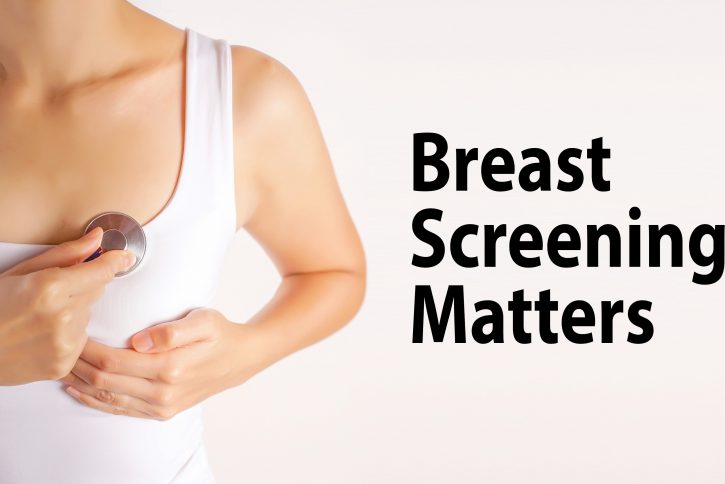
Post originally published July, 2021.
Many women with breast cancer have no symptoms, which is why regular breast screening is so important. The best way to catch breast cancer in the early stages – when it’s most treatable – is through routine mammograms. Early detection of breast cancer can lead to more effective treatment and better outcomes.
Depending on whether you are at average or high risk for breast cancer will determine when you should start getting a mammogram and how frequently you should get them. Talk to your healthcare provider about the best options for your unique situation.
It is important for you to know your breasts. Don’t be afraid to ask your healthcare provider questions about your mammogram results. The more information you have, the more likely you are to be aware if abnormal changes in your breasts occur.
Recommended Breast Screening Guidelines
Women at Average Risk of Breast Cancer
The American Cancer Society recommends that women at average risk of breast cancer (no personal history of breast cancer, a strong family history of breast cancer, or a genetic mutation known to increase the risk of breast cancer, and has not had chest radiation therapy before the age of 30) get breast screenings as follows:
- Age 40 to 44 – have the option for annual breast screenings
- Age 45 to 54 – should get annual mammograms
- Age 55 and older – have the option to continue annual breast screenings or switch to mammograms every other year
Women at High Risk of Breast Cancer
The American Cancer Society recommends that women at high risk of developing breast cancer get a mammogram every year, usually starting at age 30. Factors that contribute to a high risk level include:
- Have a lifetime risk of breast cancer of greater than 20-25%. Talk to your healthcare provider about available risk assessment tools and what your risk level may be.
- Have a known BRCA1 or BRCA2 gene mutation based on genetic testing
- Have a parent, brother, sister or child with a BRCA1 or BRCA2 gene mutation
- Had radiation therapy to the chest at age 10 to 30
- Have Li-Fraumeni syndrome, Cowden syndrome, or Bannayan-Riley-Ruvalcaba syndrome, or have first-degree relatives with one of these syndromes
Knowledge Is Power
Is a clinical breast exam or breast self-exam an adequate substitute for getting a mammogram?
While it is important for you to know your breasts and to address any abnormal changes with your healthcare provider, these exams are not a substitute for receiving a mammogram. A mammogram is the most reliable method of early detection of breast cancer.
Do I have dense breasts?
Women with dense breasts are at a higher risk of developing breast cancer. Dense breasts can also make it more difficult to find breast cancer on a mammogram. If you do have dense breasts, you can decide with your doctor which, if any, additional tests are necessary.
Which screening test is right for me?
In addition to mammograms, ultrasounds and MRIs are currently being studied as a screening tool for women with dense breasts. Ask your healthcare provider which test is right for you.
Does my family history put me at higher risk of breast cancer?
It is important to your breast health to discuss both sides of your family history with your healthcare provider. Be sure to share any risk factors – including family history of breast or other cancers, previous radiation exposure and personal medical history. If you have other factors that put you at high risk of breast cancer, your doctor may order an annual breast ultrasound or magnetic resonance imaging (MRI).
If you have questions about your breast health, our women’s health nurse navigator can help. Learn more here or call 740-687-2727.
Source: American Cancer Society
